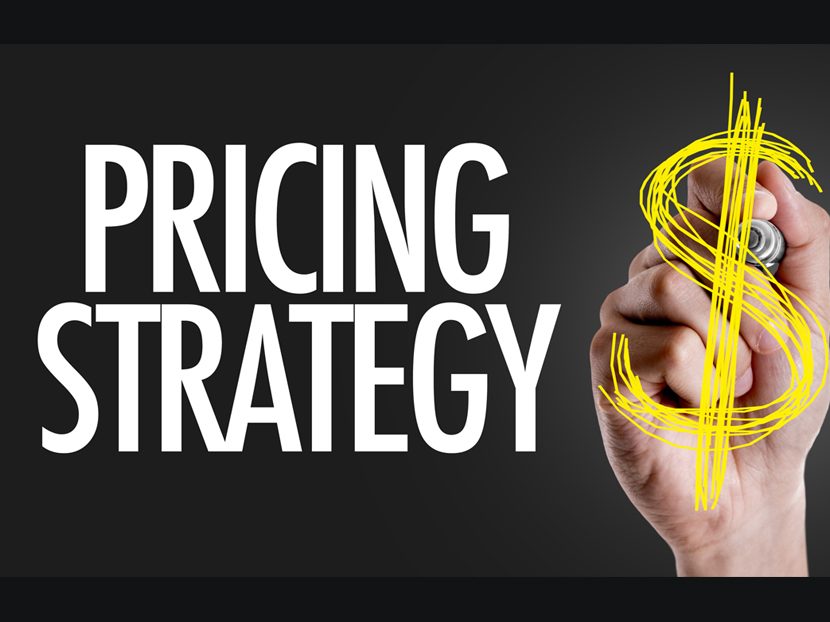How to Answer the Price Question
A well-planned pricing guide will allow your techs to answer the consumer’s price question properly and profitably.

How do you react when the consumer asks, “How much will that cost?” Hesitation in answering can make it difficult to close the deal. Giving the consumer an hourly rate does not answer the consumer’s question since they won’t know the total price until the task is completed. And that fact increases the propensity for an argument over the bill when it is presented.
Since they know the price before giving you the job, contract pricing is preferred by consumers – and that which is preferred gives you more opportunities to increase your profits.
If no one from your business can respond rapidly when asked the price question, consumers will start to wonder whether any one knows what they are doing.
As those doubts rise, your opportunity to service their needs at a proper profitable selling price will be diminished. When a properly profitable price is quoted to the customer quickly and with authority, you and your technicians are displaying intelligence, confidence and resolve. In turn, the consumer's confidence in your business will increase along with your chance to serve them profitably.
Contract pricing for PHC service companies should be done by calculating the true cost of operation based on selling all available revenue-producing tech hours all the time. Although no contractor sells all their tech hours all the time, using all your available revenue-producing hours is the only constant you have since you never know how many hours you will sell in any given year. (Please note: There is a difference between hours paid and revenue-producing hours.)
Since no contractor sells all their tech hours all the time, you must address the unsold-hour factor by applying a profit margin that not only takes into consideration the profit you would like to attain as your reward for delivering excellence to consumers, but also the risk you take with regards to issues such as the unapplied labor factor.
If you sell 70 percent of your available tech hours on average, you would need a 30 percent profit margin on labor and overhead just to break even. To make more than it costs you, the profit margin must be higher.

Pricing guide.
After establishing your true cost and chosen profit margin, a pricing guide that describes repetitive tasks, true costs, profit margins and profitable selling prices will allow your techs to answer the consumer’s price question rapidly and confidently.
With contract pricing, prices in your guide should be based on averages. Although accuracy is always preferred, reality often makes accuracy impossible to attain. That’s the reason for using averages.
For example, after years of statistical analysis, I have concluded that the average time to change a tubular P trap under a consumer’s sink is one hour, which includes knocking on their door; introducing yourself; discussing the consumer’s situation; quoting a price; writing an invoice; getting the client’s authorization; preparing the work area; gathering tools and material from the truck; performing the task; testing the work done; cleaning up; getting paid; thanking the client for allowing you to serve their needs; putting tools, excess material and debris in its proper place; and, finally, getting in your truck ready for the next service call.
I found that 85 percent of the time that scenario takes between 50 and 70 minutes. The median would be 60 minutes, plus your average travel time to consumer. As to the remaining 15 percent, sometimes it takes more or less time. But those instances will even each other out.
In addition to the average time spent performing a task, average material cost allowances should be used since the cost of material also fluctuates depending upon the supplier and/or manufacturer from whom you purchase the material.
You must understand the parameters of the price guide used and how to use it correctly. The replacement of an item, which is at ground level and in an open area, is a different task than the same item concealed 14 feet above ground or in a cramped space.
Practicality prevents price guides from having every scenario. Keeping your guide brief yet comprehensive is a balancing act. The prices should pertain to services that you typically perform. All other tasks should be calculated based on the circumstances relative to the task. In those instances, information in your guide can be helpful to your techs calculating proper profitable selling prices.
Making and maintaining your own price books takes time. And time is money. If you don't keep your book current and costs rise, you will lose money because the information in the book could be flawed. You can purchase price guides from firms specializing in this type of publication. But you must be certain that the costs, profit margins and selling prices are compatible with your business goals.
Price books should include the following:
- Contain as much current information as necessary for you to be as accurate as possible.
- Have quickly accessible current information.
- Be user-friendly.
- Give the technician enough information to be able to alter selling prices according to job characteristics if necessary.
- With the exception of the selling price, be coded in a way that only company personnel can interpret.
A quick, accurate answer.
Consumers think that professionals should have the price of any task on the tip of their tongues. If you spout the first number that comes to mind and it's too low, you may get the job and lose money. If it's too high, you may not get the job at all.
But keeping the current price of all tasks on the tip of your tongue is difficult. Price books are the answer. The customer sees the technician look up a price or calculate the price as it pertains to their circumstances, based on information in a printed format. The consumer gets a quick answer in which they have more confidence.
I’ve included a typical layout page used in the R&G Profit-Ability, Inc. “Readily Available Pricing Information Digest” for the PHC contractor that I offer.
As a contractor, I created this layout to give technicians as much information as needed to sell company services in a professional expeditious and profitable manner. Since abbreviations take up less space, they are preferable to using full words, phrases or sentences. They also afford you a code that can give you and your techs an insight that is for only company eyes.
Each page has one to six tasks. Each task has a minimum of four regular business hour prices – two for the first task of a service call visit; one when all material or equipment is in your vehicle and the other when some material or equipment must be picked up. The other two prices are for each additional task of the same service call visit when material/equipment is in a vehicle or must be picked up.
This feature allows your techs to increase sales by offering another service at a lower price since they are already at the consumer’s location and travel costs to the consumer don’t exist.
Contractor prices are customized to contractor factors for travel time; labor and overhead costs; and desired profit margin. Average task times are included for each task.
Starting at the upper portion of the page, proceeding from left to right, you will find columns, which indicate the following as per the yellow balloon indicators:
1. Task number.
2. Item, task description and additional material needed if any.
3. The cost allowance of the main item e.g. trap, tailpiece, circulator, AC condenser, etc.
4. The cost allowance of additional material.
5. The average time to perform the task at the client’s location.
6. The average travel time to consumer customized to your time.
7. The break-even cost to contractor dependent on amount of tech hours sold. The example shows 100, 70 and 50 percent.
8. Task line and material origin identification.
9,10,11. Adjusted prices based on whether there is a discount for service agreement clientele, seniors, military, etc., or premium prices for after regular business hour services customized to your factors.
12. Regular business hour prices customized to your average breakeven cost at 100 percent of time sold; your average travel time; and your desired profit margin.
The sample page shown is not the actual size. The actual size of a page is a standard 8½ inches x 11 inches. The sample is based on a contractor cost per tech hour of $100; a 40 percent profit margin; and a 30-minute average travel time. The book comes with your choice of sections – plumbing, heating, cooling – which are color accented in green, red, or blue respectively. The yellow balloons in the sample do not appear on the actual pages.
Technicians are aware that there are slow times because you have them washing and waxing their trucks or cleaning up the shop. Having the break-even cost gives your techs a reason to understand that since the prices are based on selling all tech hours all the time, all the money they bring in doesn’t go into your pocket.
Selling tool.
This feature also serves as a selling tool. Consumers really don’t have a thorough knowledge of the costs of running a PHC service business. Any quoted price has the potential of giving consumers sticker shock.
Using the first task of the sample page as an example. The first task, with the $322.86 price costs that contractor $194, if all hours are sold all the time; $258, if only 70 percent of available tech hours are sold and $344 at 50 percent of time sold (indicated by break-even cost column under No. 7 in our sample page.
When techs encounter consumers suffering from sticker shock, they can explain that the a service request will cost your business minimally between $258 and $344 since no contractor sells all tech hours all the time. Speaking candidly with consumers can get you more work since most consumers will now realize all the money they are paying doesn’t go into your pocket.
Price guides are business tools. Wrenches allow you to turn nuts and bolts; pipes and fittings etc. Properly formatted price guides allow you to quote properly profitable prices.
If your techs have to contact you to get a price for a job, you must stop what you were doing to address their price questions. If more than one tech calls you at the same time, you now have one tech waiting for you to finish addressing the other tech. This time-wasting process also affects a one-person operation. A properly formatted price guide can allow you and your techs to get more work done. That gives you the opportunity to increase your profits.
Regardless of your business size, business tools that free you up to bring in more revenue are invaluable. The proper and profitable way to answer the price question is with numbers that can get you where you want to go rapidly and intelligently. The easy way to accomplish that feat is by using proper tools for the job at hand.
Richard P. DiToma has been involved in the PHC industry since 1970 starting as an apprentice, then, becoming a journeyman and master. He spent 41 years as an award-winning contractor. As a contracting business coach/consultant he has authored books on contracting business management as well as customized price guides for contractors. He created and facilitates seminars on business management for groups and individual businesses. His Contractor Advantage programs show contractors how to do the right thing. For information or to contact DiToma: call 845-639-5050; email richardditoma@verizon.net; mail to R & G Profit-Ability, Inc. P.O. Box 282, West Nyack. N.Y. 10994.





